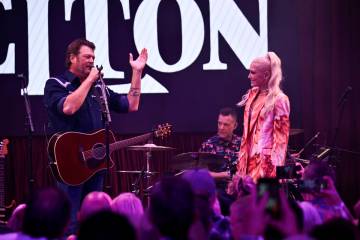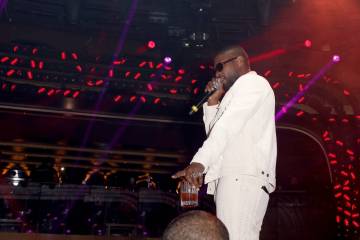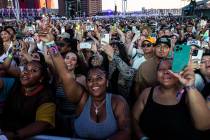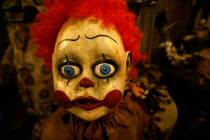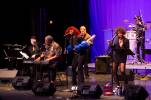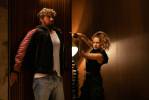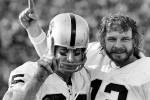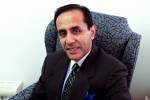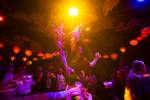Smith Center carillon provides visual landmark with aural possibilities
The Smith Center's 17-story bell tower stands tall, signaling its downtown location - and serving as inspiration for the performing arts center's logo. It's even a recurring design element at the center itself, turning up on everything from gleaming door handles to ushers' uniforms.
The tower "turned out to be, architecturally, as iconic as we hoped it would be," says Smith Center President Myron Martin.
But the bells themselves, the reason for the tower, haven't made quite as much noise. Yet.
The Smith Center's 47 cast-bronze carillon bells, housed at the top of the tower, chime on the hour throughout the day. (When they ring at 8 p.m. - curtain time for many Smith Center shows - patrons know they'd better hurry to their seats.)
And "anytime we have a wedding or a special ceremony," Martin explains, the bells can play one of hundreds of songs programmed into a computer server.
There's "Auld Lang Syne," in case of a New Year's Eve celebration. Patriotic songs, from "America the Beautiful" to "The Stars and Stripes Forever," stand by for an instant Fourth of July concert. From "Alley Cat" and "As Time Goes By" to "Born Free" to "The Sound of Music's" sing-along favorite "Do-Re-Mi," complete with counterpoint, the bell tower's computer server contains a wide variety of musical selections.
Martin envisions a time when carillon concerts might precede outdoor Symphony Park performances.
"Who knows?" he says.
Demonstrating the carillon's capabilities, he hits a button on the computer server, triggering a minute-long bell peal that showcases the carillon's resonance and four-octave range.
There's the soft, silvery ring of high-octave notes - and the deep, powerful "bong, bong, bong" of the largest bells.
As Edgar Allan Poe wrote in his poem "The Bells," they're "keeping time, time, time in a sort of Runic rhyme, to the tintinnabulation that so musically wells ... to the swinging and the ringing ... to the rhyming and the chiming of the bells!"
The largest of those bells, low C, is 6 feet tall and weighs 5,500 pounds; overall, The Smith Center's 47 bells weigh more than 29,500 pounds.
And for truly custom chimes, there's a piano-style MIDI (Musical Instrument Digital Interface) keyboard - found 12 floors below the top of the tower, in Reynolds Hall's intimate, wood-paneled Carillon Salon - with a virtually instant command of the bells.
Hovering over the keyboard, Martin plays a familiar Westminster chime sequence, followed by three additional notes.
"It is 3 o'clock?" he says, double-checking the time. "I don't want to confuse anybody by making them think it's 5 o'clock."
Also in his repertoire: the familiar six-note "Charge!" heard at many a sporting event. (It's especially familiar - or it should be - to Martin, a former organist at the Texas Rangers' Ballpark in Arlington.)
But the programmed computer server will supply the majority of songs the carillon will play, Martin says.
"Modern technology meets the Old World," he says.
Traditionally, carillonneurs play bells by pounding a series of wooden sticks - connected to the bell clappers - with their fists.
"The truth is, the traditional carillonneurs would not want us to use a keyboard like this," Martin acknowledges.
But because there are only about 50 carillonneurs in the U.S., and "maybe a handful" of professionals - none of whom lives in Nevada - the computerized approach made sense, he says.
When it comes to the bells themselves, however, tradition reigns - and rings.
America's last remaining bellmaker - Cincinnati-based Verdin , which has been in business since 1842 - designed and installed the bells.
Verdin brought portable bell-casting equipment to Las Vegas for The Smith Center groundbreaking, where local schoolchildren passed metal ingots to artisans who heated them and poured them into a mold, which was later broken by then-Mayor Oscar Goodman.
Other bells were cast in the Netherlands, where workers melted bronze and poured the molten metal into molds.
These days, however, computer-assisted design helps tune the bells, Martin says.
It's "only thanks to very sophisticated, high-tech equipment" that the bells can be tuned precisely, to capture "what musicians call overtones - potentially dozens of notes a trained ear can detect," he explains.
The molds used to cast The Smith Center's bells "are the same form they've used" before - with one important change.
"Each of our bells has someone's name on it," representing a sponsor who contributed to fund the carillon.
"It's my favorite story about the bells," Martin says - because the contributors (listed on a poster outside the Carillon Salon) aren't "millionaires and billionaires and hotshots," but "people who work at The Smith Center. It's their gift to the community."
Martin had hoped to sponsor a bell himself, in honor of his daughter Molly, but the response was so strong "we ran out of bells," he notes. (Instead, the Carillon Salon keyboard honors Martin's daughter.)
Yet the very fact that The Smith Center has a bell tower represents a break with tradition, Martin points out.
Generally, "bell towers and performing arts centers don't really" mix, he explains, because of the challenge of keeping "the bell sounds isolated from the concert hall."
But Smith Center architect David M. Schwarz thought a bell tower could provide "a sense of civic pride" if it were incorporated into the design of the performing arts complex, Martin says.
The tower "makes a statement about a community that came together" to build the performing arts complex, he says.
The bells also remind him of hearing "the random toll of the bell" in European cities.
"That's not something we've had in Las Vegas," he says. "It may be Old World, but it does give us a certain element of a world-class city."
It also underlines The Smith Center's sense of permanence, he observes.
"These bells will be up there for the next hundred or two hundred years," Martin says, envisioning a time when "families in the future will hear the same songs their grandparents got married to."
Contact reporter Carol Cling at
ccling@reviewjournal.com
or 702-383-0272.






